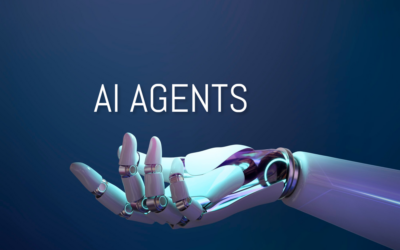Table of Content
- What is Fine-Tuning
- Main Aspects of Fine-Tuning
- Importance of Fine-Tuning
- Role in Generative AI Development
- The Process of Fine-Tuning
- Fine-Tuning vs. Other Techniques
- Parameter Efficient Fine-Tuning (PEFT) and Low-Rank Adaptation (LORA)
- Security and Compliance in Fine-Tuning
- Krasamo AI Development Services
- References
Fine-tuning large language models (LLMs) is a critical process that enhances the performance and utility of pre-trained models by training them on specific datasets tailored to particular tasks or domains. This paper explores the concept of fine-tuning, its importance, and its role in developing generative AI applications.
What is Fine-Tuning
Fine-tuning is the process of taking a pre-trained LLM, such as Llama or GPT-4, and further training it on a smaller, task-specific dataset. This additional training helps the model learn to perform specific tasks more accurately and consistently. While pre-trained models are generalized and trained on vast amounts of data, fine-tuning refines them to excel in particular applications by exposing them to relevant examples and scenarios.
For those new to fine-tuning, starting with a smaller model and a clear task is recommended, then progressively increasing the complexity and model size as needed.
Main Aspects of Fine-Tuning
- Task Specialization: Fine-tuning allows a general-purpose LLM to specialize in a specific task or domain. For instance, a pre-trained model can be fine-tuned to function as a customer service agent, a medical advisor, or a legal assistant, depending on the nature of the dataset used for fine-tuning.
- Data Preparation: The quality and relevance of the dataset used for fine-tuning are crucial. The data should be well-structured, diverse, and representative of the target task. Common formats include question-answer pairs, instruction-response pairs, and other structured text inputs.
- Training Process: Fine-tuning involves feeding the model task-specific data and adjusting weights based on the learning objective, typically next-token prediction. The process is iterative and involves multiple epochs, where the model is trained on the entire dataset several times to refine its performance.
- Model Evaluation: After fine-tuning, the model’s performance is evaluated using a separate test dataset. This evaluation helps determine the effectiveness of the fine-tuning process and identifies areas for further improvement.
Importance of Fine-Tuning
Fine-tuning is vital for several reasons:
- Enhanced Performance: It improves the model’s ability to handle specific tasks more accurately and consistently than a generic, pre-trained model.
- Customization: Organizations can tailor LLMs to their unique needs, incorporating proprietary data and specific domain knowledge.
- Reduced Hallucinations: Fine-tuned models are less likely to generate irrelevant or incorrect information, enhancing their reliability.
- Cost Efficiency: Fine-tuning smaller, specialized models can be more cost-effective than large, general-purpose models, particularly in high-traffic applications.
Role in Generative AI Development
Fine-tuning is crucial in developing generative AI applications by bridging the gap between general AI capabilities and specific application requirements. It enables developers to create models that understand and generate natural language and adhere to the nuances and demands of particular tasks. This capability is essential for building robust and reliable AI systems that operate in high-performance real-world scenarios.
The Process of Fine-Tuning
The fine-tuning process involves several steps:
- Data Collection: Gather a dataset relevant to the target task. This dataset should be comprehensive and cover various aspects of the task.
- Data Preparation: Structure the data in a format suitable for training, such as question-answer or instruction-response pairs. Ensure the data is clean and free of noise.
- Model Initialization: Start with a pre-trained model that serves as the base for fine-tuning. Popular choices include GPT-3, GPT-4, and other open-source models.
- Training Configuration: Set up the training parameters, including learning rate, batch size, and the number of epochs. These parameters influence the training dynamics and final model performance.
- Fine-tuning: Train the model on the prepared dataset. This step involves iteratively adjusting the model weights to minimize the prediction error based on the task-specific data.
- Evaluation: After training, evaluate the model’s performance using a test dataset. Accuracy, precision, recall, and F1 score are commonly used to assess performance.
- Iteration: If necessary, fine-tune the model further based on the evaluation results. This iterative process continues until the desired performance is achieved.
Fine-tuning LLMs is a powerful technique that enables the creation of specialized, high-performing AI models tailored to specific tasks. By understanding the principles and process of fine-tuning, stakeholders can better collaborate with developers to build generative AI applications that meet their unique needs. This foundational knowledge empowers organizations to leverage the full potential of LLMs in their operations.
Instruction Fine-Tuning
Instruction fine-tuning is a variant of fine-tuning that teaches LLMs to follow instructions and behave more like a chatbot. This method transformed GPT-3 into ChatGPT, significantly increasing AI adoption. Data for instruction fine-tuning can come from FAQs, customer support conversations, or Slack messages, and it helps models generalize better across various tasks.
Fine-Tuning vs. Other Techniques
1. Fine-Tuning: Fine-tuning involves taking a pre-trained LLM and further training it on a smaller, task-specific dataset. This technique allows the model to specialize in a specific task, improving its performance and consistency. Fine-tuning is highly effective for enterprise or domain-specific use cases, where accuracy, consistency, and domain knowledge are crucial. It also helps reduce hallucinations and aligns the model’s behavior with specific requirements.
2. Transfer Learning: Transfer learning involves using a pre-trained model on a new task by adjusting its weights slightly. Fine-tuning is a form of transfer learning but involves a deeper level of adjustment to tailor the model to a particular domain or task. Transfer learning, in general, may involve less modification compared to fine-tuning, making it more suited for tasks where the new domain is closely related to the original training data.
3. Prompt Engineering: Prompt engineering involves crafting specific inputs (prompts) to guide a pre-trained model’s outputs. While it is a quick and easy way to customize a model’s behavior without additional training, it is less reliable and consistent than fine-tuning. Prompt engineering is useful for prototyping and general use cases but may struggle with complex, domain-specific tasks that require high accuracy.
4. Knowledge Distillation: Knowledge distillation involves transferring knowledge from a larger, more complex model (the teacher) to a smaller, more efficient model (the student). This technique often reduces the computational requirements of deploying large models. While it can make models more efficient, it does not inherently tailor the model to specific tasks like fine-tuning does.
Parameter Efficient Fine-Tuning (PEFT) and Low-Rank Adaptation (LORA)
Advanced techniques like Parameter Efficient Fine Tuning (PEFT) and Low-Rank Adaptation (LORA) enhance the efficiency of the fine-tuning process by minimizing the number of parameters that require training. These methods offer significant benefits, including lower computational costs, faster training times, and the ability to maintain high performance.
- Advanced techniques like Parameter Efficient Fine Tuning (PEFT). Parameter Efficient Fine Tuning (PEFT) is an advanced technique in fine-tuning large language models (LLMs) that optimizes the process by reducing the number of parameters that need to be adjusted. Instead of fine-tuning all model parameters, PEFT selectively updates only a subset, significantly lowering computational costs and speeding up the training process. This method is particularly advantageous for deploying LLMs in environments with limited computational resources or where cost efficiency is critical. PEFT allows for high performance while maintaining the scalability and adaptability of the model to new tasks, making it an essential tool in modern AI development.
- Low-rank adaptation (LoRA) is a technique designed to fine-tune large language models efficiently by introducing two trainable weight matrices into the architecture. Instead of adjusting the full parameter set of the model, LoRA introduces low-rank matrices that are added to the pre-trained weights, effectively capturing task-specific knowledge with minimal additional parameters. This approach significantly reduces the computational burden of fine-tuning, making it more feasible to adapt large models to new tasks even with limited resources. By operating on a low-rank subspace, LoRA maintains high performance while ensuring the model remains scalable and efficient during training and inference.
Integration with Existing Systems
The fine-tuning process involves taking a pre-trained language model and training it on data specific to the organization’s systems, such as a CRM. This data might include customer support transcripts, emails, chat logs, and other interactions that occur within the CRM. By fine-tuning the model with this domain-specific data, it learns to understand and generate responses better aligned with the company’s communication style, terminology, and customer needs.
For example, if a company uses a CRM to manage customer support, the model can be fine-tuned using historical support tickets and responses. This allows the model to automate and enhance future interactions by providing accurate, context-aware replies consistent with the company’s existing customer service practices.
Security and Compliance in Fine-Tuning
Ensuring secure fine-tuning environments and adhering to data governance protocols are crucial in the fine-tuning process. Fine-tuning should be conducted in secure environments, such as Virtual Private Cloud (VPC) or on-premise systems, to protect sensitive and proprietary data from unauthorized access or breaches.
Organizations must ensure that their fine-tuning processes comply with relevant data governance frameworks and regulations, such as GDPR. This involves maintaining strict control over data access and ensuring the fine-tuning process adheres to privacy laws.
Best practices for secure fine-tuning include encrypting data during transfer and storage, implementing access controls to restrict data access, and regularly auditing the fine-tuning process to ensure compliance with security protocols. Learn more about LLM security.
Krasamo AI Development Services
- AI Strategy
- Implement Flexible Open Source AI
- UI/UX Design of Adaptative Interfaces
- Generative AI Application Development
- Generative AI in IoT Devices
- LLM Training and Fine-tuning
- Retrieval Augmented Generation (RAG)
- Software Testing Services Using LLMs
- Design of AI Infrastructure
- Data Security and Governance
- Ongoing Support and Maintenance
- AI Skills–Team Augmentation












